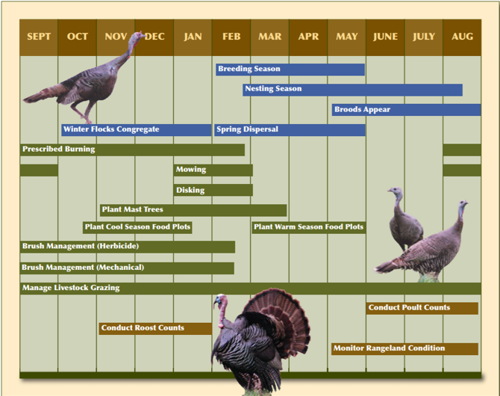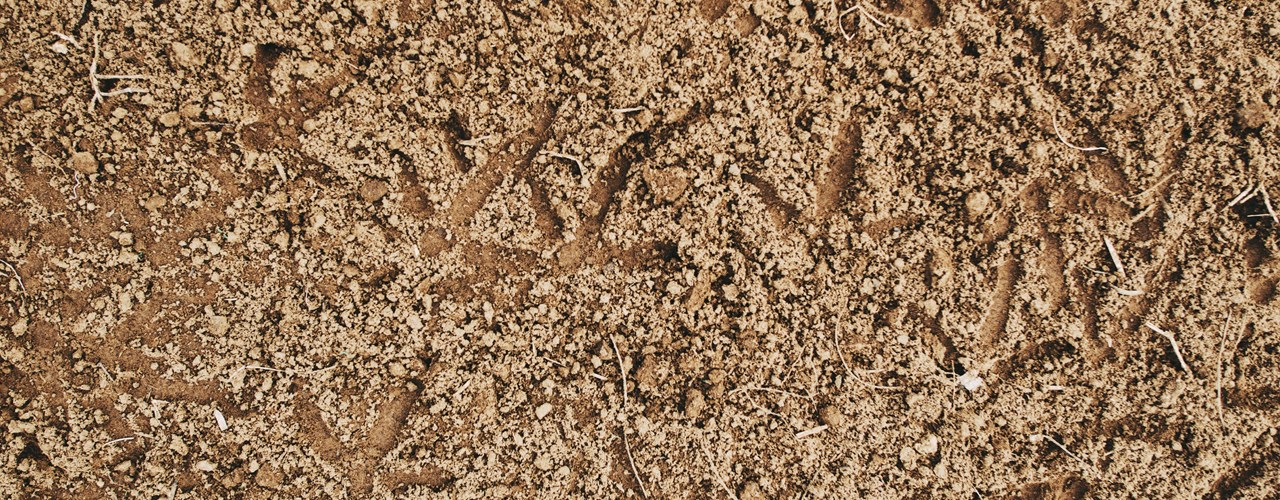Rio Grande Wild Turkey Management in Texas
As fall hunting season in Texas rapidly approaches, it may be time to evaluate the quality of your Rio Grande Wild Turkey (Meleagris gallopavo intermedia) habitat and determine the health on your land. The ideal habitat for a Rio Grande Wild Turkey includes a mixture of wooded and open areas that maximize protective cover to escape from predators and adverse weather conditions. These habitats also provide excellent nesting and brooding cover that allow young turkeys to successfully hatch and begin their lives safely, and roosting cover that protects the flock during long nights. Quality roosting cover and green vegetation for food are both essential for these game birds. Proper management techniques and timely actions can ensure your property becomes a more productive turkey habitat in the future.
Texas A&M AgriLife Extension’s Rio Grande Wild Turkey Life History and Management Calendar provides an overview of a year in the life of a wild turkey and at what stages different management strategies should be enacted. This is a useful tool for landowners and managers who want to improve their land for wild turkeys, and by monitoring populations over time we can see the benefits of management practices. Information about reproductive trends, estimations of the abundance of turkeys on a property, and identification of the limiting factors turkeys face can all be obtained from this resource.

Texas A&M AgriLife Extension’s Rio Grande Wild Turkey Life History and Management Calendar.
Spring: March, April, May
The spring is a time of dispersal from winter flocks as the breeding season for wild turkeys begins. Nesting begins in early spring, and broods begin to appear by the end of this season. It is the ideal time to plant warm season food plots and continue with lighter livestock rotational grazing management and density rates following the typical last frost date for your area.
Summer: June, July, August
The main summer event for turkeys is the appearance of new broods as nests hatch throughout this time. As a manager, this time is important for conducting poult counts to estimate the number of new turkeys and monitoring the condition of rangelands.
Fall: September, October, November
In the fall, managers should implement habitat management techniques like finishing up herbicide applications, conducting mechanical brush management, and continued monitoring of livestock grazing. Winter flocks will begin to gather at the beginning of October as they prepare for the cold season. Near the end of October and beginning of November, it is time to plant cool season food plots and mast trees that will provide food for wild turkeys. Around this time it is also beneficial to conduct roost counts to get another estimate of population numbers.
Winter: December, January, February
Winter practices should continue fall brush management practices, with the addition of mowing and disking beginning in January. All roost counts should be completed by the end of January, because spring dispersals and a new breeding season will begin in early February.
For additional information, view these resources at http://agrilifebookstore.org:
- E-37 Prescribed Range Burning in Texas. Texas AgriLife Extension.
- B-1466 Chemical Weed and Brush Control: Suggestions for Range-land. Texas AgriLife Extension.
- B-1466A Chemical Weed and Brush Control: Suggestions for Range-land, 2007 Supplement. Texas AgriLife Extension.
- B-6196 The Rio Grande Wild Turkey: Their Biology and Management. Texas AgriLife Extension.
- SP-317 Habitat Appraisal Guide for Rio Grande Wild Turkey. Texas AgriLife Extension.
Also visit: http://wfsc.tamu.edu/turkey




